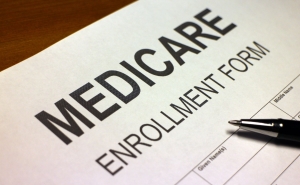Exposure to Vitamin D in the Womb Might Minimize Risk of High Blood Pressure for Children Born to Mothers with Preeclampsia
Findings Come From New Analysis of Large Epidemiological Dataset
Children appear to be at greater risk of having high blood pressure when their mothers had the high blood pressure condition called preeclampsia during pregnancy—but this adverse association may be reduced or even eliminated for children who were exposed to higher levels of vitamin D in the womb, according to a study from researchers at Johns Hopkins Bloomberg School of Public Health.
The findings, based on an analysis of data on 754 mother-child pairs in Massachusetts, suggest that higher vitamin D levels in pregnancy may help protect children born to preeclamptic women from developing high blood pressure. High blood pressure in childhood is associated in turn with hypertension and heart disease in adulthood.
The study was published online October 5 in JAMA Network Open.
“There is increasing evidence that cardiovascular disease risk is, to a great extent, programmed in the womb, and we now see that it may be vitamin D that alters this programming in a beneficial fashion,” says study senior author Noel Mueller, PhD, an assistant professor in the Department of Epidemiology at the Bloomberg School.
Preeclampsia, which can lead to strokes and/or organ failure, is a major cause of illness and death for pregnant women, and also is associated with a greater risk of stillbirth and preterm birth. Researchers have estimated that preeclampsia occurs in 2–8 percent of pregnancies worldwide. It is associated with maternal obesity, and the rate of severe preeclampsia in the U.S. has risen sharply since the 1980s.
At the same time, the rate of high blood pressure among children in the U.S. has risen by about 40 percent between 1988 and 2008. Studies have suggested that maternal preeclampsia may be a factor in that increase.
Studies also have linked maternal vitamin D deficiency to a higher risk of preeclampsia, and have suggested that lower levels of vitamin D in adulthood or even early in life bring a greater risk of hypertension.
“We wanted to know if vitamin D levels in the womb would modify this association between maternal preeclampsia and hypertension in childhood,” says study first author Mingyu Zhang, a PhD candidate in Mueller’s research group.
To investigate this question, the team analyzed data that had been gathered on 754 mother-child pairs from 1998 to 2018 in a large epidemiological study conducted at the Boston Medical Center in Massachusetts. The dataset included information on preeclampsia during pregnancy, tests on blood from the umbilical cord at birth, and the children’s blood pressure from age 3 to 18.
About 62 percent of the mothers in the study group were Black, and 52 percent were overweight or obese. Previous studies suggest that mothers who were Black or overweight or obese were at higher risk for preeclampsia. Darker-skinned people living in higher latitudes also are more likely to be deficient in vitamin D—a cholesterol-derived molecule that is present in some foods but also is synthesized in skin with the help of ultraviolet light.
Roughly ten percent of the women in the study group had preeclampsia, and the analysis revealed that their children on average had higher systolic blood pressure than the children born to non-preeclamptic mothers—about 5 percentile points higher, when all the blood pressure readings were arranged on a 0 to 100 percentile scale.
Cord-blood vitamin D levels clearly modified these associations, and in a dose-related manner. Children in the lowest 25 percent range of vitamin D levels (lowest “quartile”) were about 11 percentile points higher in blood pressure, on average, if their mothers had had preeclampsia, compared to children of non-preeclamptic mothers.
For children in the highest vitamin D quartile, there appeared to be no difference in average blood pressure if their mothers had had preeclampsia—in other words, the results suggest that having relatively high vitamin D levels at birth, which could be achieved through dietary supplements, may completely mitigate the risk brought by preeclampsia.
“If other epidemiological studies confirm these findings, then randomized trials would be needed to determine conclusively if higher vitamin D in mothers at risk of preeclampsia protects against childhood high blood pressure,” Mueller says.
“Association of Cord Blood Vitamin D and Preeclampsia with Offspring Blood Pressure in Childhood and Adolescence” was written by Mingyu Zhang, Erin Michos, Guoying Wang, Xiaobin Wang, and Noel Mueller.
The research was supported by the National Institutes of Health (K01HL141589, R01HD086013, R01HD041702, R01HD098232, R01ES031272) and HRSA (UJ2MC31074).
# # #
Media contacts: Jon Eichberger at je@jhu.edu and Barbara Benham at bbenham1@jhu.edu.





